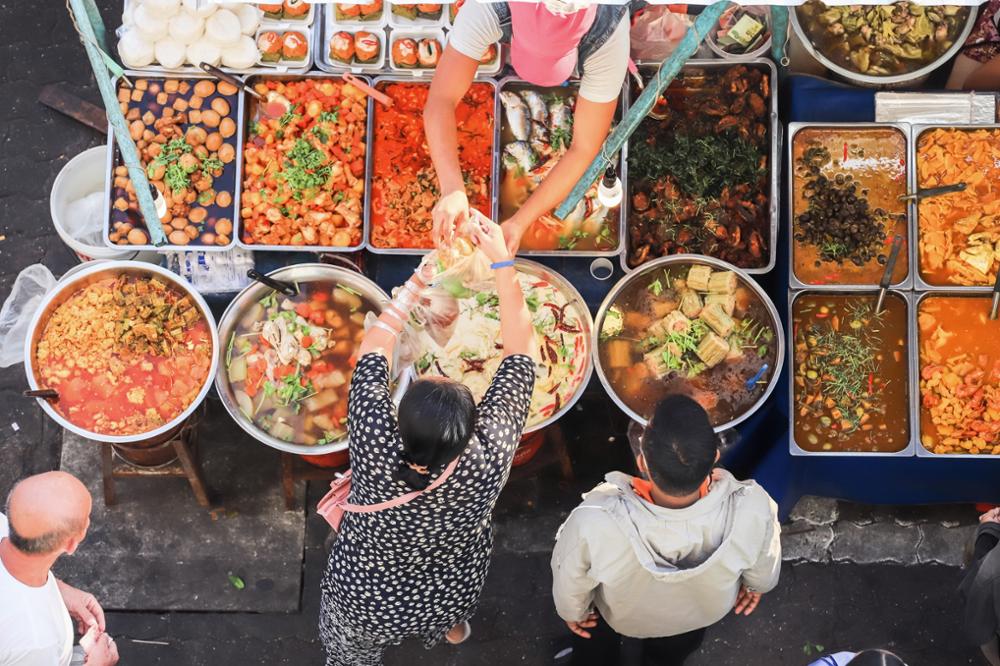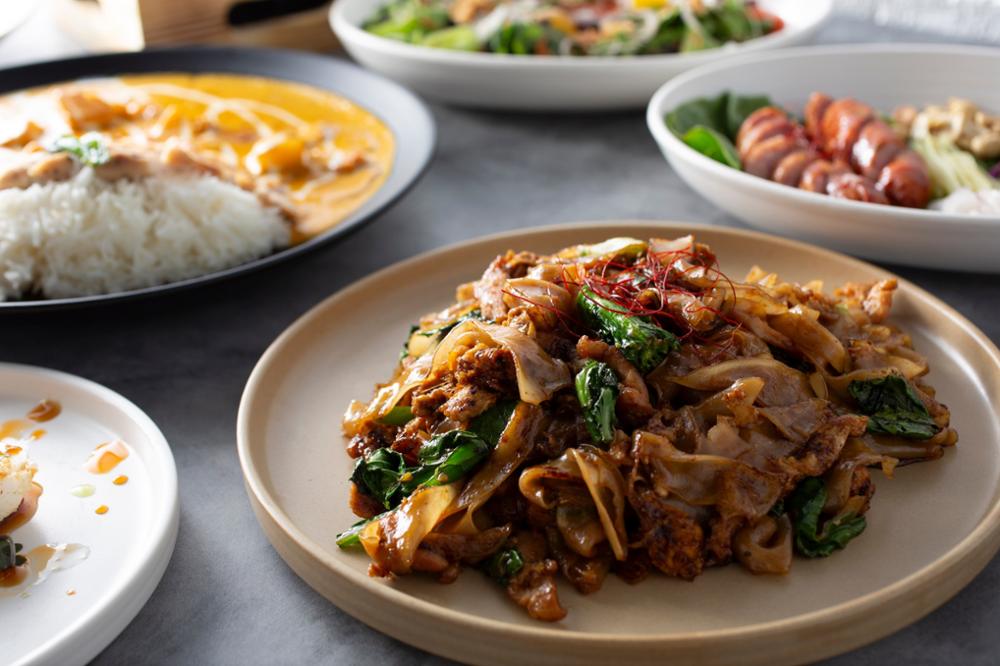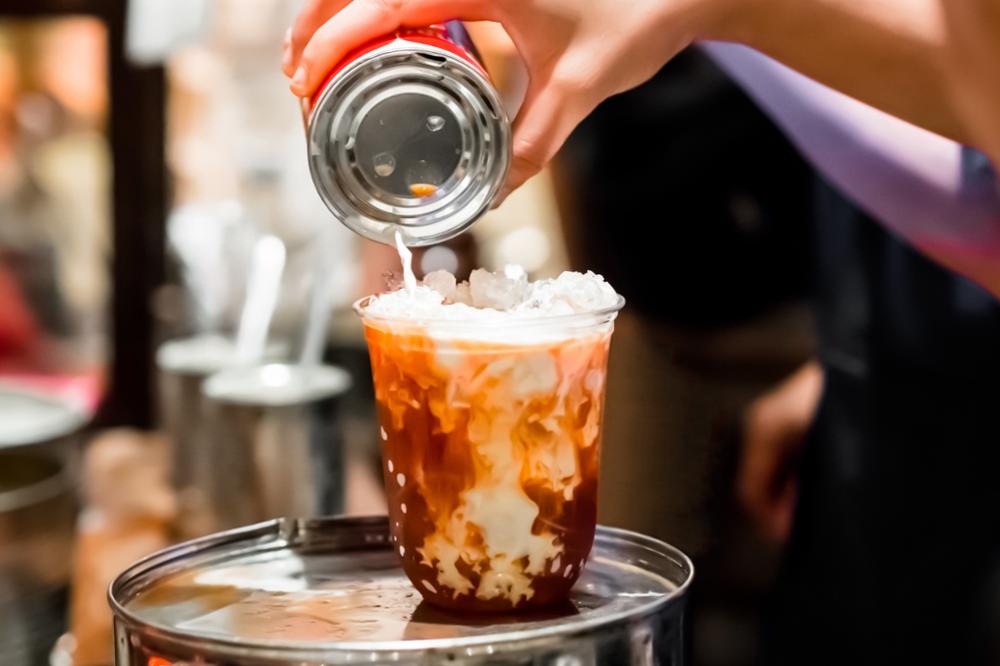
What to eat in Thailand if you don’t like spicy food
Not a fan of spicy flavors and worried about what you’ll eat on a trip to Thailand? Don’t worry! It’s entirely possible to enjoy non-spicy dishes in Thailand. Here’s a list of Thai dishes without chili and our tips on how to avoid spicy flavors during your stay.
Is Thai food always spicy?

It’s true that Thais eat very, very spicy food. However, Thai cuisine offers a rich variety of flavors and dishes that aren’t always spicy. Fresh herbs and aromatics (such as galangal, lemongrass, and kaffir lime) are often used to flavor dishes without adding chili.
Moreover, Thai food is always fresh and prepared to order, so it’s possible to adjust the spice level for certain dishes. It’s also worth noting that locals are aware most travelers don’t eat spicy food and will often reduce the spice level for Westerners.
Good to know:
Generally, Thai people are used to asking tourists about their preferred spice level. You can request a dish without spice, except for a few dishes that will always be a bit spicy (like curry soups such as panang curry, Tom Yum, or green curry, which are made with a pre-spiced curry paste). For those who want to try the spices, it’s best to start mild and increase gradually. Thais may ask for your spice level: 1 chili (mild), 2 chilis (medium), and 3 chilis (very spicy).
What are the non-spicy Thai dishes?

If you don’t eat chili at all and are concerned about what to eat during your trip to Thailand, fear not. Here are some of the main non-spicy Thai dishes:
- Pad Thai: Considered the national dish, pad Thai is a staple of Thai cuisine. It’s a dish of stir-fried rice noodles with eggs, vegetables, peanuts, tamarind sauce, and your choice of meat (chicken, pork, beef), fish (shrimp, seafood), or tofu.
- Khao Pad (or Kao Phat): A fried rice dish with egg, vegetables, meat, fish, or tofu.
- Pad See Ew: Stir-fried noodles with sweet black soy sauce, garlic, and vegetables. Meat, fish, or tofu can be added.
- Tom Kha: A coconut milk soup made with galangal, lemongrass, and mushrooms. The most common version is chicken (Tom Kha Kai), but other variations include beef, pork, fish, tofu, and vegetables. Sweet and mild, it’s one of the few Thai soups that isn’t spicy.
- Pad Med Mamuang (often listed as "Cashew Nuts" on menus): Stir-fried vegetables with cashews and a delicious sweet-salty sauce. Again, you can choose to add meat, fish, or tofu.
- Pad Gratiem Prik Thai (often listed as "Garlic & Pepper" on menus): A stir-fried dish made with your choice of protein, crispy fried garlic, and lots of pepper.
- Kai Jeow: A Thai-style omelet made with eggs, fish sauce, soy sauce, and herbs, and optionally with vegetables or pieces of meat.
Note!
Although these dishes are generally not spicy, it’s best to let the server know you don’t eat spicy food. To help with this, here’s a quick Thai language tip: simply say “Mai Ped” (pronounced “My Pet”), which means “not spicy.”
Aside from these non-spicy dishes, other typically spicy Thai dishes can be made without chili. Just mention it when ordering. Some of these include:
- Som Tam: The famous green papaya salad with tomato, lime, peanuts, and fish sauce. While it’s usually made with powerful chili peppers, some restaurants can prepare it without chili.
- Laab: Minced meat salads, either cooked or raw, mixed with fish sauce, shallots, lime juice, fresh herbs (mainly cilantro and mint), and fresh chili (which can simply be omitted). There’s laab kai for chicken and laab moo for pork. There’s also a minced tofu version for vegetarians.
- Pad Gaprao (or Pad Kra Pao): Stir-fried meat (or shrimp, seafood, or tofu) flavored with Thai basil, soy sauce, and oyster sauce. Locals love it with fresh chilis, but you can ask for it without.
- Morning Glory: A local favorite at any time of day, this dish consists of water spinach with garlic and chili in a sweet-salty sauce. Again, you can request a version without chili.
What to do if you eat something too spicy?

Ordered a dish that’s spicier than you expected? Here are some tips to soothe your “burning mouth”:
- Don’t try drinking cold water, as it can actually make things worse. Contrary to popular belief, cold water doesn’t reduce the burning sensation of chili. It can even spread the capsaicin (the molecule responsible for the spiciness) in your mouth.
- Have dairy-based foods and acidic drinks. These can help reduce the burning sensation. Think smoothies, milkshakes, cow’s milk yogurt, ice cream, lime juice, or tomato juice.
- Pair your meals with a portion of rice. Carbohydrates (and sugar in general) help tone down the heat from chili.
- Rinse your mouth with oil: This might sound unappetizing, but it’s highly effective! Capsaicin is fat-soluble, meaning it only dissolves in fatty substances. Rinsing your mouth with oil can help relieve the burning sensation.
Now that you know all about managing the spiciness of Thai food, all that’s left is to wish you delicious meals!
Florine Dergelet
